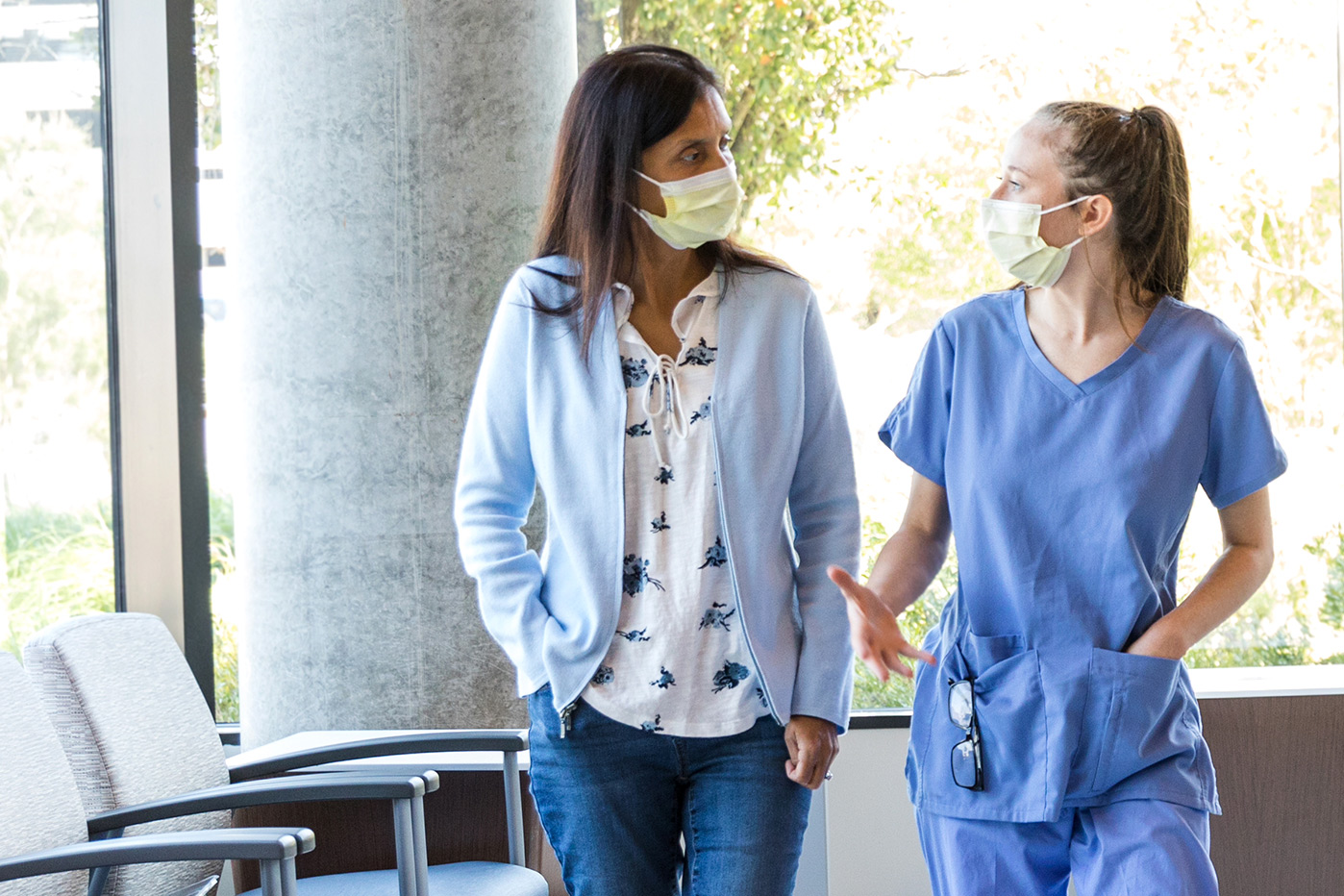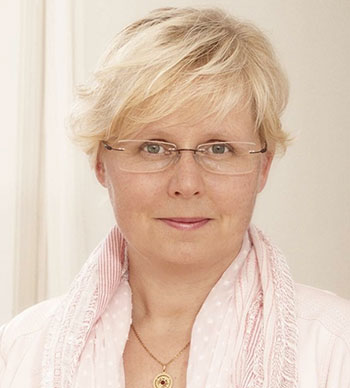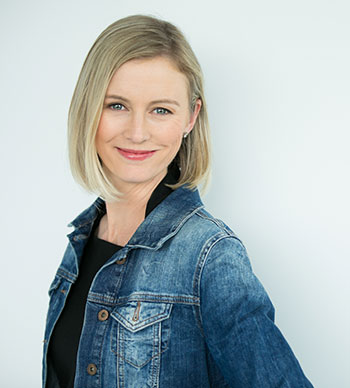
The general public’s perception of and experiences with the health care system have shifted substantially and arguably deteriorated over the past several years. With the COVID-19 pandemic, family physician shortages, hospital data breaches and significant wait times, the patient experience can often be stressful and frustrating.
In a series of articles reflecting on the 2021 National Physician Health Survey (NPHS), the Canadian Medical Association (CMA) explored the perspectives of a variety of physicians, including rural medicine and family medicine practitioners, around burnout, professional fulfillment and medical culture as a whole.
In this latest instalment of the NPHS series, representatives of the CMA Patient Voice Advisory Group share their lived experiences navigating the health care system with observations of how physician wellness impacts patients.
To enact meaningful solutions, health leaders must address the parallel issues of how patients experience health care and how their physicians work around a crumbling system. Therefore, the CMA commissioned a Comparison with General Population Report to accompany the 2021 NPHS, which includes an analysis of the differences in psychological, occupational, behavioural and social outcomes between survey respondents who were medical doctors and respondents from the employed Canadian population (“general population”).
While 38% of the respondents from the general population reported experiencing burnout, the rate of burnout among physicians and medical residents was significantly higher (53%). Physicians and medical residents also reported higher levels of emotional exhaustion (18% higher) and depersonalization (8% higher) compared with the general population.
As work-related stress and burnout increase, so does the prevalence of low professional fulfillment. For physicians, that has led to early retirement, reductions in clinical hours and, in some cases, leaving the field altogether.
On average, physicians and medical residents work 53.7 hours a week and reported having fairly poor control over their workload. Beyond seeing patients, physicians also juggle unique and often inefficient administrative burdens (such as electronic documentation, email, prescriptions, ordering and reviewing tests).
Respondents from the general employed population, by contrast, reported working an average of 35.1 hours per week and expressed having more satisfactory control over their workload. However, the general population report does not cover the experiences of people who faced unemployment during the pandemic, which could have resulted in significant stress and mental health effects that could affect patient health outcomes.
While media stories helped amplify patient and health system issues like emergency department (ED) wait times and closures, surgical delays and physician and nurse shortages, the connection to the health care provider’s experiences is often missing.
In this piece, three CMA Patient Voice Advisory Group members discuss how physician and patient wellness are inextricably linked and why the broader health system must face the harsh realities of a system that is squeezing the space of time for care — and, ultimately, the ability to care.
Stress, safety and workplace factors affecting care
Physicians and medical learners often cite the wish to help others as their primary driver or calling when deciding to pursue a medical career. This deep desire to help is the thread that binds professional healers, but it can fray or break under profound stress.
One crucial finding in the CMA’s reporting and analysis is the significantly higher level of intimidation, bullying, harassment and microaggressions in the health workplace. Health care professionals went from being revered and clapped for in the early days of the pandemic to now facing unprecedented levels of hostility and harassment in the workplace, in their personal lives and online. Seventy-eight percent of physicians and medical residents reported intimidation, bullying, harassment and microaggressions at work (nearly double the rate for the general population, 42%). This translates into lower scores of psychological safety at work for medical professionals compared with non-physicians.
For Elke Hutton, a patient family partner and patient advocate from Saskatchewan, post-traumatic stress disorder (PTSD) and trauma across the health system are issues she is passionate about amplifying with her voice as a local, provincial and national advocate. “Having lost my husband and two stepsons, I experienced trauma in dealing with the health care system,” she explains. “On top of that, I experienced trauma in dealing with my own chronic health care issues ever since childhood, so my interactions with the system as a caregiver and patient have been extremely difficult and heavy.”
Hutton finds parallels between her late husband’s career in the Royal Canadian Mounted Police (RCMP) and the work of physicians facing unrelenting stresses and demands. “I witnessed with my husband what a hardcore profession can do to a person — the level of burnout is real. You are dealing with intense, superhuman stress levels and decision-making that can often be life or death. And there is a trauma piece in these hardcore jobs that I don’t think many realize or manage,” she says. “One might not realize that the health care system can cause trauma because it is supposed to be healing.”
Hutton feels that tackling misinformation, a key driver of harassment and abuse amplified by the pandemic, would benefit health care professionals significantly. “Beneath the layers of anger and hate we see in the conspiracy theories out there, there is trauma. People act irrationally or latch onto these horrific theories because there is some unmet need there, and debunking these issues takes time and effort — a real communications strategy,” she acknowledges. “So, while people are spewing misinformation without getting debunked or trolling and threatening physicians, the short-sighted action is to add security to keep doctors and hospitals safe. The underlying issue, the trauma, just keeps growing.”
In addition to the external pressures like misinformation, harassment and abuse, the entire health system and its people face internal pressures from health human resource shortages across the board. “That further traumatizes physicians and health care workers — they’re being made to do things that they’re not equipped to do or do not have the capacity to do, so what more can you expect from them?” asks Hutton.
For Sudi Barre, a patient advocate in Alberta, one of the central elements she advocates for is recognizing the humanity across the physician–patient relationship. “We as people are not robots; we can’t alienate one aspect of who we are, but we’re in a system that forces and rewards that,” she explains. “The system judges and compensates physicians for their physical productivity. But that’s in direct conflict with the most common motivator for why people pursue medicine — they want to help.”
Taking care of others and nurturing health is considered a calling. While financial stability or professional status are also motivators for pursuing a medical career, most physicians (and their patients) view the drive to care for individuals and communities as the ignition point for entering the field.
“The financial gain or status is nothing compared to the sacrifices that physicians make to be of service. Considering the years of schooling, the cost of education and the time spent away from their families, I think sometimes the public forgets that physicians are also caregivers or loved ones in their own homes, too,” says Barre.
Barre adds that compassionate communication is essential whether patients are in acute or long-term care. As someone who abruptly went from having a low-risk pregnancy to requiring an emergency C-section that led to a massive heart attack, heart failure and transient ischemic attack (TIA) strokes, Barre was thrown into the deep end of critical care as a patient rather than as an advocate.
After her baby was born in a low-risk hospital, the deterioration of her heart required moving Barre to a critical care hospital while her baby stayed behind. Barre, a new mom, felt further traumatized by the ordeal without family members or other support to step in and help her.
“My heart was already so fragile, and I had seven more heart attacks and went into heart failure. The implantation of a left ventricular assist device (LVAD) was so hard on my body that it left me temporarily blind and deaf during the first open-heart surgery; it was identified before I was transferred to the critical care unit, and it took another six months to get my vision back,” she recalls. “Add to that the onset of the TIA strokes and being sidelined as a new mom, and my fighting spirit really broke. I was healthy and had no pre-existing conditions, and then suddenly I was facing life-threatening conditions that I could never have imagined. It took so much out of my family and me — and this was before the pandemic and its social distancing isolation.” The thought of not being able to have her coworkers physically visit and support her through this battle, as happened to so many during the pandemic, stirs unsettling feelings for Barre.
Having experienced the jarring overwhelm of complex care directly is what inspires Barre to help Canadian immigrants and refugees learn how to navigate and integrate with their new country’s system. She is also currently mentoring two first-year medical students by sharing her lived experiences as a patient and her unique perspectives as a newcomer advocate.
Consideration for what matters most to patients and physicians
The 2021 NPHS reports that the levels of burnout among practising physicians and residents have nearly doubled compared with pre-pandemic times (1.7 times higher than in 2017). The connection between burnout and low professional fulfillment was another key finding in the survey, with 79% of physicians scoring low on feelings of contentment, satisfaction and meaning in their work.
This prolonged friction and stress are projected to have severe consequences for a patient’s ability to access care, with 49% of physicians reporting intentions to reduce their clinical hours over the next two years. With significant numbers of open positions, particularly in family medicine where new graduates will not be able to fill the need, the pipeline of physicians is appearing to be slowing.
“The reality of what the Canadian health care system is doing right now is not going to match patient expectations,” says Claire Snyman, a health advocate from British Columbia. As a patient with complex care needs who has faced life-threatening conditions, undergone brain surgery and experienced pulmonary embolisms, she is well versed in navigating a complicated system.
“You don't realize how complex and fragmented it is until you become a non-routine patient with multiple specialists, medications and appointments, which is who I became when I was diagnosed with a non-malignant brain tumour,” she shares. “I thought the health care system would help keep things in one place, keep things organized and efficient and make it easy for my doctors to look after me — but that’s not actually how it goes. The ownership that patients, especially patients with non-routine conditions, have to take in their management and record-keeping is massive.”
The trauma of nearly dying is what drives Snyman to advocate and teach. She hopes that patients and caregivers can become more educated in their journeys and fill the gaps that a fractured system poses.
“I struggle when I’m referred to a new specialist. My heart sinks. Because I know it will be a six- to eight-month wait to see someone, but that doesn’t help when I’m sick or can’t breathe,” she shares. Feelings of helplessness are further exacerbated when patients face diagnoses they may not be equipped to handle.
“This reckoning often lands in your lap when you’re in a vulnerable state, like when you are diagnosed with something really scary,” Snyman explains. “So, if your physician is trying to get you out the door in five to 10 minutes and you don’t have the resources to cope or know what to do next, it adds to the stress or resentment a patient might feel.”
Her advice to patients is to prepare for appointments with priority-order questions to maximize the limited time available with their doctor. For Snyman, one high-priority question she includes is just to ask how her physician is doing, too.
“Having a provider who is also in a good state of mind means I will get quality care. If the person providing care is going downhill, my care is going downhill, too. So, I will gladly take two minutes out of my 10-minute appointment to ask my GP how they are doing,” she says.
It’s a technique adopted from her patient experience. “In the 12 years that I’ve seen countless specialists, only twice have I been asked how I am being impacted or what matters most to me that day,” she explains. These jarring but extremely powerful questions are crucial for patients and physicians to discuss candidly. This type of dialogue can not only address the top concern a patient is facing but also provide the physician with a sense of accomplishment and satisfaction.
“I feel like physicians are being squeezed more and more. Even the narrow window where they’re supposed to breathe between patients is gone,” Snyman says.
Re-imagining the health care system is urgently needed, not a nice-to-have
As the Canadian health care system continues to buckle, the clock is ticking to plan for and problem-solve the issues raised by physicians in the 2021 NPHS. With more than half of physician respondents indicating a desire to modify or reduce their clinical hours over the next 24 months, the drivers of this intention need to be addressed. For example, low professional fulfillment, poor or marginal time for documentation, screening positive for depression and dissatisfaction with their current job are the critical factors driving physicians’ intentions to cut back their hours.
The lack of sufficient time for documentation is a pain point that isn’t just being felt by physicians. Hutton, Barre and Snyman all speak of the administrative burden they face as patients having to stitch together their medical records and data to have productive appointments with their doctors. They are also acutely aware of their physicians' administrative burden with fragmented information and record sharing across multiple care providers and organizations. If physicians need to spend more time on administrative tasks to keep up with a surging workload, they may have less time for quality face-to-face interactions with their patients, and this may lead them to scale back their clinical hours as a counterbalance.
While addressing shorter term issues like the need for more staffing and better technology could enable significant gains to be made more quickly, these three patients all wish to amplify the need for long-term cultural change in the health care system.
“There needs to be a total cultural shift. It should not be acceptable that people are working 22-hour shifts, haven’t slept and are squeezing every last drop of energy to see as many patients as possible,” says Snyman. “Moving to a right care, right place, right time team-based model means that the onus is not on the physician to contort themself to fit any and every gap.”
“As a patient, would you want to be treated by someone who is sleep deprived and running on fumes?” Snyman suggests asking health care decision-makers and planners.
Hutton agrees and says there is an opportunity to incorporate patient navigators and assistants more formally to relieve some burdens. “There's a real need for intermediaries within the system who will take on some of the functions that can be off-loaded from physicians,” she suggests. “For example, a patient with diabetes who has gone through the journey can help a new patient navigate and deal with common-sense issues that are always there. They can be a filter and reduce some of the blowback hitting physicians right now,” she explains.
Snyman shares a story of a recent ED visit highlighting the resourcefulness of a multidisciplinary team approach. After arriving at her local hospital, Snyman was told there would be more of a wait than usual because the unit was down 12 nurses. As a result, she feared that what would typically be an eight- to 10-hour visit would balloon. But two things happened that instantly changed her perception of the situation and helped to keep her calm.
First, she observed that the ED was tapping paramedics to help take vitals and triage patients. Because of clear communication about the short-staffed ED at the start of her visit, she could better manage her expectations regarding increased wait times and limited resources.
Secondly, in witnessing the cross-functional team effort at play, Snyman considered the humanity of those providing care.
“It made it easier for me to understand that, yes, it’s beyond reasonable to see the doctor or nurse having a cup of coffee outside. These folks are strapped and working grinding hours without resources. So, while I might need to wait longer in the ED today, they’ve been working for 12 hours and need to be able to take a moment to regroup. Or eat. Or go to the bathroom,” she explains.
A clear and effective communication strategy would be a valuable way for hospitals to better connect with their patients and family members to mitigate the stress and tension on both ends of the stethoscope.
“As is, many doctors are caring beyond their capacity,” Barre indicates. “I believe that teaching patients how to be empowered in driving their health care can lift a lot of the routine stuff off their doctor. Rather than wait passively for the doctor to come to you with ideas or strategies, there is room to change the relationship to be less take-take and more give-take.”
It’s a sentiment that shifts from viewing physicians as commodities and one-way givers to instead acknowledging the humanity in everyone.
Read the National Physician Health Survey Comparison with General Population Report
Topics
Physician health and wellness data COVID-19 wellness resources Burnout Leadership and professional development Measurement and outcomes Organizational wellness Self-care Stress
Are you in distress? Get help now.



